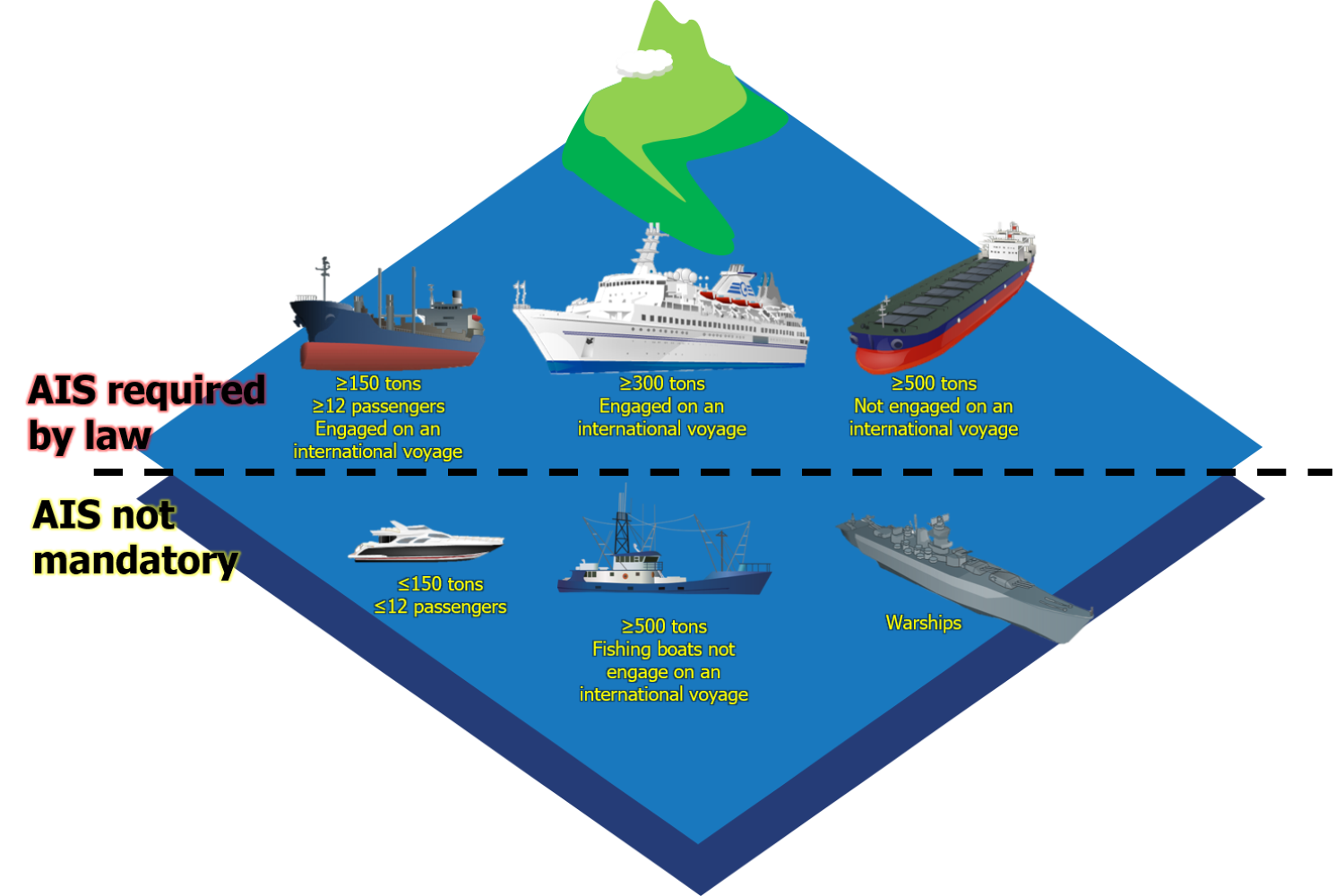Section 3. Which Ships use the Automatic Identification System?
The International Convention for the Safety of Life at Sea (SOLAS) is an international maritime treaty that sets the minimum safety standards in the construction, equipment, and operation of merchant ships. Regulation 19 of SOLAS Chapter V convention details the minimum carriage requirements for shipborne navigational systems and equipment.
In Canada, in addition to the regulations outlined in the SOLAS Convention, the obligation to carry Class A AIS systems is extended to self-propelled vessels of 150 gross tonnage or more when carrying more than 12 passengers on an international voyage (Navigation Safety Regulations [SOR/2005-134])
Ships that do not match the descriptions above – in particular, pleasure craft, fishing vessels, and warships – can be fitted with Class B AIS systems but are not internationally mandated to do so (though they may be subject to other national standards). Operators, pilots, and officers on board AIS-equipped vessels must take into consideration that the absence of Class B AIS tracks on a Class A AIS display does not automatically mean an absence of smaller craft in the vicinity. The same applies to shore stations and VTS.
Operators, pilots, and officers aboard ships should keep in mind that those vessels who are equipped with AIS as a mandatory carriage requirement might, on some occasions, have their transponders turned off in accordance with the master’s professional judgement (IMO Resolution A.1106[29]).
Owners and operators of vessels to whom mandatory carriage requirements do not apply are nevertheless encouraged to outfit their vessels with AIS. Many commercial AIS transceiver options exist and are relatively inexpensive to install either as an integrated or standalone unit.
Report a problem on this page
- Date modified:
